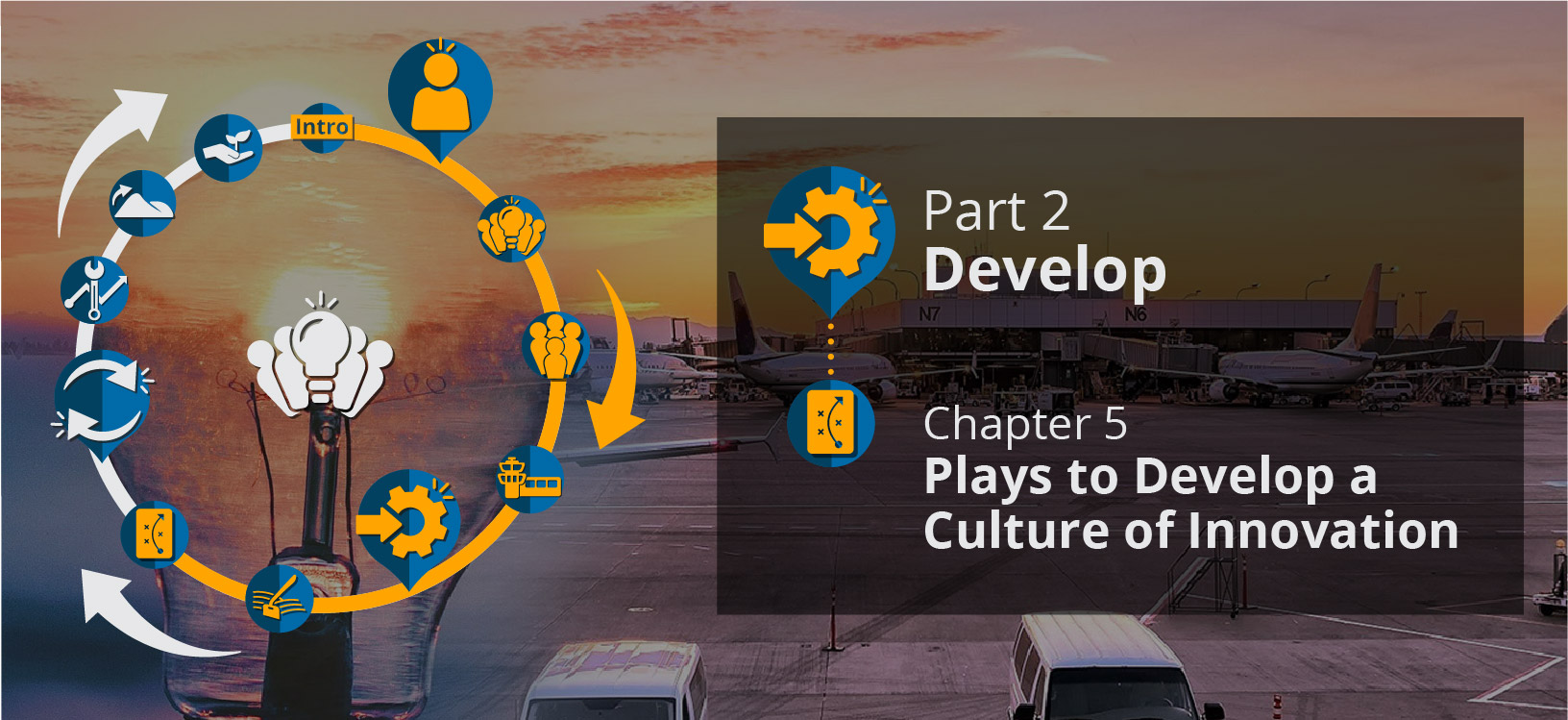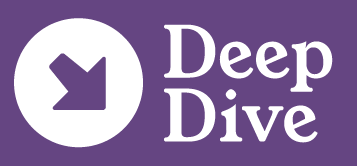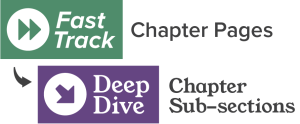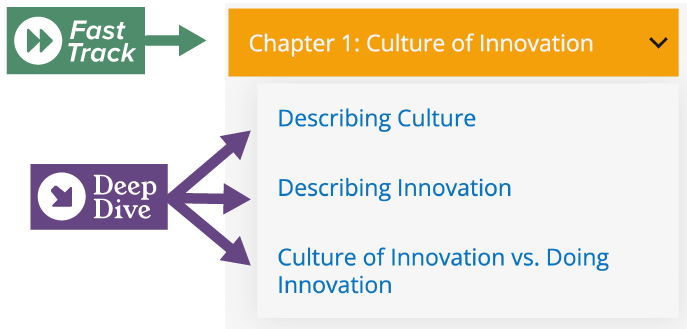

This is a Deep Dive page. Select the chapter for the Fast Track
Play 2: Empower Staff (Leadership)
Seek and Value All Opinions
Innovative leaders
- Capture diverse thoughts. Engage with individuals from various perspectives in your organization (e.g., varying levels in the organization, focus areas, ages, genders, races, and ethnicities). When innovative leaders encourage opinions from a wide variety of people, it results in more unique and unlikely ideas, leads to better decision-making when choosing which ideas to test, and helps determine the best ways to make innovative ideas happen. Establish and use diversity, equity, and inclusion plans to obtain a broad spectrum of thinking.
- Employ active listening skills. Acknowledge ideas and concepts and encourage feedback so that people know they are heard and their ideas are valued. New ideas help an organization continually improve. For example, sporting goods co-op REI has established itself as a company that seeks out feedback from its staff. (For a pop-up with more information, click this link.)1
- Know limits. Seek out others for wisdom. When leaders ask their staff members (e.g., engineers or safety managers) to share their expertise in order to pull off something new, they can get better results. This raises the visibility of staff members to leaders, and it gives staff a platform to share more ideas in the future.
Give Space to Explore Ideas
Innovative leaders
- Ideate to solve problems. Give staff opportunities to develop new ideas. Encourage staff and provide them with the space and time to solve issues that are either critical to the airport ecosystem or personal projects, such as improving a daily task. Critical-thinking time helps staff feel empowered, gives them a chance to be accountable for new things, and helps them develop new capabilities.
- Establish clear expectations. Set staff up for success by setting clear expectations. Establish methods for decision-making that ensure staff adhere to airport goals, values, and strategies. Provide staff with resources needed to test out new ideas as well as obtain feedback on the success of an idea. Involve staff in decision-making, and recognize them for their contributions.
- Make the call. Clearly communicate the decision-making process. (Staff need to understand that while they may come up with ideas, their ideas may not be implemented in the end. They need to be comfortable with hearing “no” or “not yet” and not be discouraged.) Ensure that staff do not equate their efforts with failure or setbacks. Involve staff in the decision-making process to position staff with the right mindset about their ideas. Recognize staff for their contributions, whether their ideas were used or not.
For example, Toyota has had some success in establishing a process for quality management and innovation. (For a pop-up with more information, click this link.)2
Encourage Learning Opportunities
Innovative leaders
- Provide on-the-job training. Offer training that focuses on improving current job skills or developing new ones for advancement. Skilled-based training allows staff to collaborate with colleagues from other lines of business who perform similar types of work. Cross-connecting staff can provide real benefits to the airport by recognizing if and when other lines of business have already conquered a similar challenge. Click this link for a pop-up on 3M, for example.
- Offer outside-the-job training. Encourage certification programs to help enhance interest and desire of staff to participate and “earn” new credentials, whether they are online or in person. Conference attendance is also a perk that can be helpful for staff to not only learn about new ideas but also network with other attendees to build their relationships with others in the industry.
- Benchmark with other airports. Encourage employees to reach out to other airports to learn from others' experiences and see demonstrations of new technology or processes. Consider it a privilege to travel and learn as well as develop new networking connections.
- Delegate responsibility. Let others take the reins in new leading or learning opportunities. These offerings demonstrate to staff that they are trusted and valued by the organization, which encourages them to do new things that can lead to professional development. Empowerment motivates staff to want to do more for an organization, leading them to develop an innovative mindset over time. See Empowering Your Employees in Chapter 6 for more ideas on how to consistently create empowerment opportunities.3

1 Sylvia Vorhauser-Smith, “How the Best Places to Work are Nailing Employee Engagement,” Forbes, April 14, 2013, https://www.forbes.com/sites/sylviavorhausersmith/2013/08/14/how-the-best-places-to-work-are-nailing-employee-engagement/?sh=670cb9005cc7.
2 Brad Power, “How Toyota Pulls Improvement from the Front Line,” Harvard Business Review, June 24, 2011, https://hbr.org/2011/06/how-toyota-pulls-improvement-f.
3 Vijay Govindarajan and Srikanth Srinivas, “The Innovation Mindset in Action: 3M Corporation,” Harvard Business Review, August 6, 2013, https://hbr.org/2013/08/the-innovation-mindset-in-acti-3.

